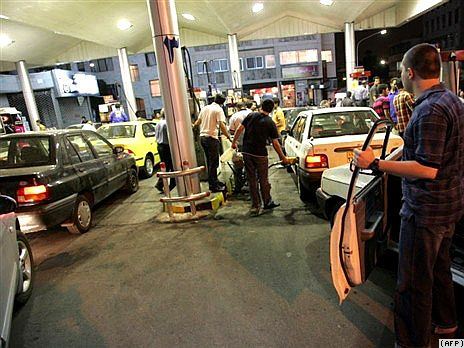Iran Guide: An Introduction to the Issue of Subsidies (Nikou)
 The Government's plans to cut subsidies has become one of the most charged issues in Iran, with divisions within the conservative establishment --- and an escalating battle between some key members of Parliament and the President --- over the proposals.
The Government's plans to cut subsidies has become one of the most charged issues in Iran, with divisions within the conservative establishment --- and an escalating battle between some key members of Parliament and the President --- over the proposals.
The subsidy cut plan also comes at a time of economic tension, raising concerns that they might contribute to inflation and thus public discontent. The first reductions were supposed to be in place this week, but they have now been delayed to next month.
Writing for Tehran Bureau, Semira Nikou offers a beginner's guide:
The 1979 revolution was carried out in the name of "the oppressed," and the Islamic Republic has been a welfare state committed to "social justice" ever since. The government introduced rationing soon after Iraq's 1980 invasion generated new economic hardships. To appease a war-weary society after the conflict, the theocracy kept consumer prices for energy, basic foods, medicines and utilities (water, power and sewage) well below market prices. But the economic burden soared as the new theocracy initially encouraged population growth, which almost doubled the population from 34 million to 62 million in a mere decade. The cost of subsidies, in turn, also soared.
The Islamic Republic has long been vulnerable economically. Politicians in both the executive and legislative branches have been reluctant to take badly-needed reforms for fear of political backlash. President Hashemi Rafsanjani's austerity plan in the early 1990s sparked riots across the country, forcing him to shelve free market reforms and subsidy cutbacks. President Mohammad Khatami was unable to mobilize support from conservatives in parliament for either subsidy reforms or a plan to gradually increase gasoline prices. Under Ahmadinejad, the announcement of gasoline rationing triggered unrest and attacks on gas stations in 2007.
Ahmadinejad proposed new subsidy reforms in 2008, but the plan was deferred until after the 2009 presidential election. He had to wage a heated political battle, and a compromise was eventually reached with the intervention of the supreme leader, in 2010. Yet for the first time, Iran's major political factions agreed that the burden of subsidies was unsustainable, despite fears of severe economic and political consequences.
The case for reform
Subsidies have been costly. They were estimated to eat up around 25 percent of Iran's gross domestic product (GDP) of $335 billion in 2009. Subsidies for energy products alone accounted for 10 percent of Iran's GDP in 2010, according to the World Bank. Iranians pay as little as 38 cents for a gallon of rationed gasoline, cheaper than bottled water. Gas costs 10 center per liter, while a liter of bottle water costs around 25 cents.
Without reforms, costs would only continue to grow as Iran's population increases -- even though innovative programs by previous presidents brought the population growth rate down, from a height of 3.9 percent in 1986 to 1.3 percent in 2008. In 2010, as he was simultaneously pushing subsidy reforms, Ahmadinejad also called for new population growth, including a $950 incentive for each new baby and a $95 annual stipend until the child turns 18. But a higher birth rate would be a further drain on the economy, and even conservatives moved to block institutionalizing his initiative.
The subsidies program has been plagued by two fundamental flaws. First, cheap prices have fostered wasteful behavior. Iran's energy consumption has increased five-fold in the past 30 years, while the population has only doubled, according to former International Monetary Fund economist Jahangir Amuzegar. Official Iranian figures claim energy consumption has actually increased nine-fold since 1976. Cheap gas has, in turn, contributed to chronic pollution, environmental decay and massive traffic overload in urban areas.
Second, subsidies have helped everyone, not just the poor. Those benefiting the most from subsidies are middle and upper income Iranians. Iran's richest 30 percent have reaped the benefits of 70 percent of government subsidies, according to Iran's ministry of economics and finance.

 Sunday, October 3, 2010 at 9:12
Sunday, October 3, 2010 at 9:12
Reader Comments